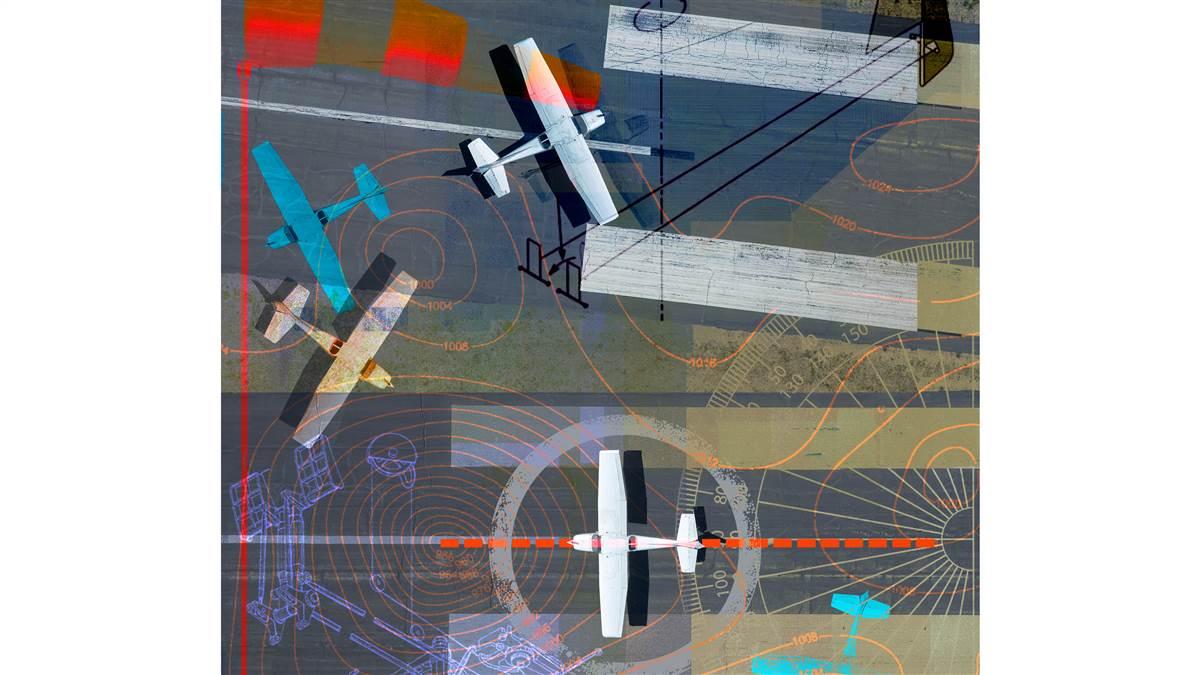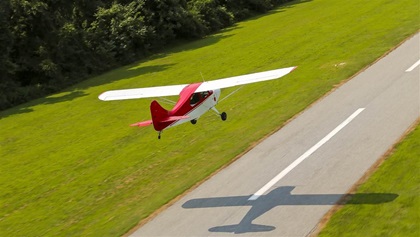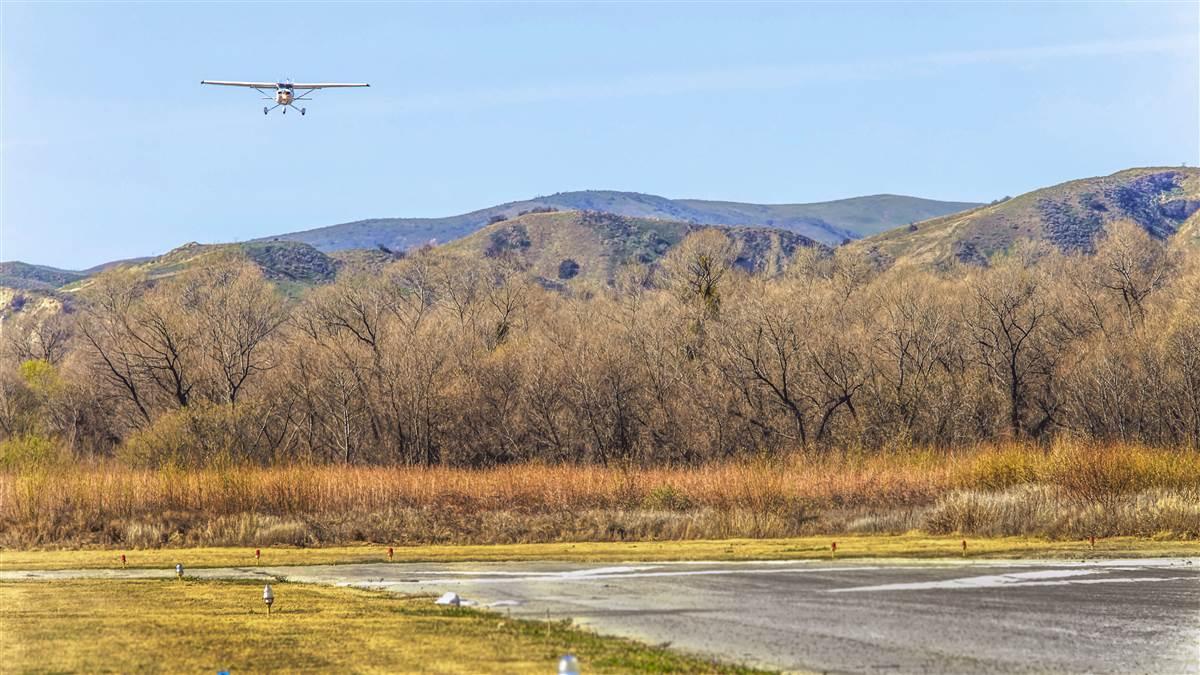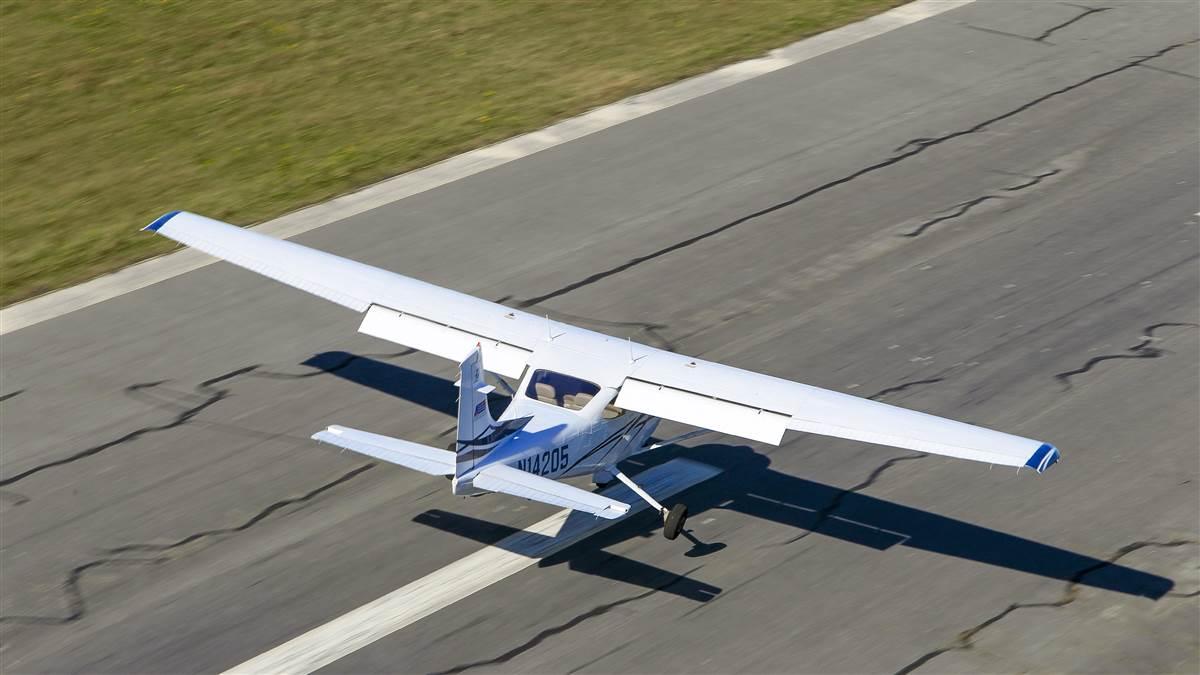Stay inside the lines
We need to stop going off the runway


These account for nearly half of all pilot-related accidents, and an untold additional number of incidents. Throw a dart on the calendar and at least two pilots had a landing mishap that day. Why are we so prone to landing problems?
The obvious answer is that landing an airplane is a difficult skill that takes an immense amount of training, reasonably good weather conditions, and a well-maintained airplane. There seems to be a pervasive belief that because landing is so difficult, we have to accept that some will go poorly, and we are going to bend airplanes. Remember that hazardous attitude called resignation? We should all be seething mad about this. It puts a blemish on our hobby or livelihood, costs us all millions in additional insurance premiums, and puts far too many airplanes out to pasture. And, yes, people are occasionally injured or killed in landing accidents.
The truth is that good landings are difficult, but acceptable landings aren’t. The type of landing where it takes a second to recognize if the wheels have touched the ground takes time to hone and evades some pilots entirely. But the adage of a good landing is one you walk away from and use the airplane again? Most of us grasp that early in training.
Looking for clues in the NTSB accident and FAA incident databases, and NASA Aviation Safety Reporting System doesn’t, at a first reading, bring up any obvious reasons for our lack of landing discipline. Each report seems unique. There’s the pilot of the Cessna 172 who bounced twice, tried to go around, and then went off the side of the runway and hit a taxi light. Or the other pilot of another 172 who veered off after touchdown because he mis-applied the brakes. A pilot of a Cessna 140 blamed a gust for his runway excursion. Then there’s the Cessna Citation crew that apparently landed on the edge of the runway at night, which caused them to veer off the side of the runway. That one truly is a strange outlier.
Read on, however, and it becomes clear we have two major flaws in our landing technique: directional control and energy management. Yes, it seems obvious to say that the two problems we face are the two fundamentals of safe landings, but focusing on these two issues helps filter out the noise. Every time we fly with an instructor, he or she gives dozens of little details and corrections to help improve our landings. That’s especially true when you’re pre-solo. The instructor comments on everything from the airplane’s nose position to our centerline track to our radio phraseology. But all those corrections come down to two fundamental challenges—keeping it going straight down the runway and maintaining a target airspeed. In training airplanes, directional control seems to be the bigger challenge, probably because we can usually get away with poor speed control. Turbine pilots can’t, however.
NASA ASRS reports show that we either don’t fully grasp the problem, or we’re reluctant to take responsibility. From the Cessna 140 pilot:
“We were high and fast so I slipped to lose altitude and held nose up to reduce airspeed. I intended a wheel landing then touch and go. I bounced a bit on the touchdown and was blown off to the left by a right crosswind and went off the runway into the dirt and dirt clods and saw construction cones in front of me. I pressed right rudder and got back on the runway where the plane made 2.5 circles and stopped facing back the way I came.”
The pilot later says in the narrative that it was a distracting conversation with the other pilot on board that caused him to ignore the windsock and allowed him to be caught off guard and blown off the runway. The narrative includes details about what they did after, the fact the other pilot on board was recovering from knee surgery, and everything that happened beforehand. None of which matters. The report should have read, “I didn’t maintain directional control on the runway, and we went off the side, resulting in no damage.” In this incident, as in countless others, all that matters is that the pilot didn’t maintain directional control with the rudder. It’s not the wind’s fault for blowing; it’s the pilot’s fault for not maintaining directional control.


Maybe it’s because most of us drive before we fly, and the motor skills required to keep a car going straight down the highway are exactly opposite to keeping an airplane going straight down the runway. But imagine if every time it was gusty on the road, cars started flying off the side. It would be chaos. At the wind speeds most of us fly, an airplane—especially a tricycle-gear airplane—is no harder to keep on the runway than a car is on the highway. The problem could be control confusion. No doubt if a camera were mounted in the cockpit of every airplane that veered off the side of the runway, most would show the pilot trying to correct back with the yoke. The yoke (ailerons) helps to keep the wheels planted by reducing the lateral force on the upwind side of the fuselage. It’s the pedals that keep us tracking straight.
Jonathan Shorey, a chief flight instructor, thinks complacency and a lack of understanding of what’s normal, could also be leading to problems. A student at his flight school recently experienced a mishap on takeoff when the Diamond DA40 veered off the left side of the runway. Wind wasn’t a concern, nor was the condition of the airplane. And Shorey said the student was known to be competent and thorough. On this takeoff he applied power and simply ran off the side of the runway. In the school’s safety management system, the student reported that the airplane veered left “as expected” and he added right rudder to compensate.
At the wind speeds most of us fly, an airplane is no harder to keep on the runway than a car is on the highway.“Just because an airplane has a left-turning tendency, it doesn’t mean it’s normal to go left and correct back,” Shorey said. “Normal is maintaining the centerline.” It’s not unreasonable to imagine that the instructor told the student that the airplane wants to go left when power is applied, so apply right pedal when it does. That’s a common instruction, but it assumes the airplane has drifted left already, which as Shorey said, is a correction, not a normal procedure.
Better advice is to anticipate the left-turning tendency, expect to add right pedal when the power comes up, and maintain the centerline with the pedals.
Lack of speed control results in a host of other problems, including porpoising, bouncing, floating, and touching down too fast. Maintaining a proper approach speed makes it nearly impossible to induce porpoising in a training airplane; bounces will be small and easily manageable, the airplane can’t float (and thus has less time to be subjected to gusts), and the touchdown speed will be slower.
Good and experienced pilots have multiple sets of skills. One is a set of fundamentals that keeps them on the target airspeeds and altitudes. Another helps them recover from mistakes when the first set fails. Being 10 knots fast on approach is bad form, but not necessarily a recipe for an accident. Students and newer pilots haven’t yet honed those recover skills, so they must focus intently on developing the fundamental skills, which will avoid the need to recover. Nailing the airspeed on final, for example, will result in not having to save a landing from a big bounce or porpoise. Not allowing yourself to drift left of the centerline on takeoff will save you from having to correct back.
By focusing on your feet keeping you straight on the runway and turning into a crosswind, you can expect to enjoy a lifetime of safe landings that always stay inside the lines.



